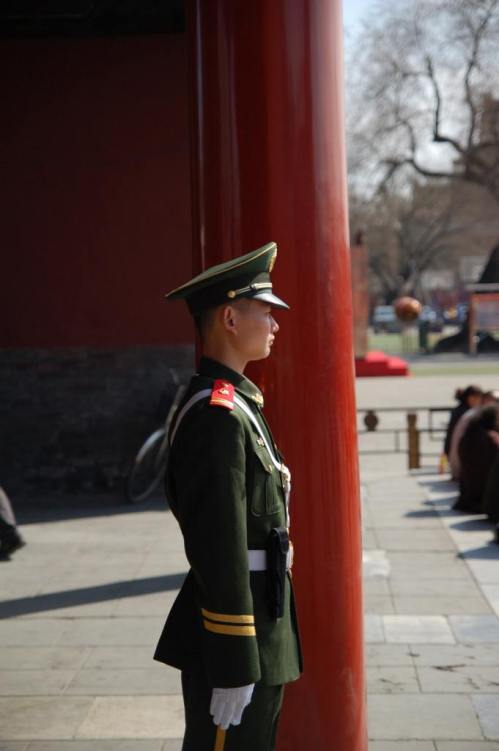In the late 1970s and early ’80s by the central government of China there was an official program initiated to restrict the amount of children, reduce the growth rate of China’s enormous population, making that today there are not enough youngsters to pay for the older generation. There were even forced abortions and sterilizations (the latter primarily of women).
The one-child policy produced consequences beyond the goal of reducing population growth. Most notably, the country’s overall sex ratio became skewed toward males—roughly between 3 and 4 percent more males than females.
It seems now several youngsters also have preference not to have children. They seem to forget that when they would be over 60 there shall be no children able for them to take care. The consequence of not wanting children is not providing a generation who shall be at work whilst the elders would be retired, so that there would not be money to provide for those retired people. Something which has become a huge problem in China.
We wonder if those who now say it will be great to have a child-free life still would say that when they passed the age to have children. shall they still say
“You’ve slept in, woken up to a tidy home, it’s quiet, and you’ve got the rest of the day to potter around, no interruptions. A child-free life is a good life.”
when they find themselves in that quiet home where they are just with themselves and nobody to continue their family generation.
The above message floats over a video that captures a scene of serene domesticity. Posted on TikTok a few days ago, it has already racked up more than 100,000 views.
The video’s creator, “Danni ‘childfree’ Duncan”, who seems mainly to be concerned about his own freedom, is among those who have been able to start a movement under their generation which clearly has decided not to have children. That movement even has its own hashtags (#childfreebychoice and #nothavingkids).
One could easily think that all this is a whim of short duration. But we rather have the impression that these young people do not really realise what their childless life might be in a few years.
However, we obviously cannot ignore or overlook this movement, because it involves not just a few but thousands of women all over the western world.
This craze is just one small part of a wider, and highly significant, demographic issue: across much of the world, birth rates are plummeting.
On Nov 15 this year, the global population is expected to reach eight billion. The United Nations predicts it could grow to about 8.5 billion by 2030 before peaking at 10.4 billion in the 2080s. After that – and some predict it will happen 20 years earlier – the world’s population will start to fall.
Some on the other hand argue that we here in the West should curb births because in the poorer countries, far too many children are coming into this world and thus will overpopulate it. In certain countries they thought lots of children would die because of Covid or because of global warming disasters. In the industrialised countries there was a growth of babies born.
“About nine months after the pandemic, we see what we call a ‘baby bump,’”
said Martha Bailey, a professor at the University of California, Los Angeles, and one of the authors of a study from the National Bureau of Economic Research.
After more than a year, lots of people having been in lockdown, in those countries with economic unemployment we could notice more children being born than normally in the same period over a year. In several countries, lots of 80+ and 90+ people died from the Coronavirus, but still, we can see that the number of 70-79 year-olds increased a remarkable percentage.
We should be aware that usually in countries where conditions for survival are more difficult that more children will be born there, but also more deaths will occur. In the West, similarly, with improved living conditions and a reduction in child deaths, we have had a reduction in births.
The few decades of projected global population growth that remain will be driven by a small number of undeveloped countries, many in the Sahel region of Africa. In countries like Niger, which has the world’s highest fertility rate, economic conditions remain so harsh that women continue to have an average of six or more children in order to survive.
In contrast, for most of the rest of the world – including Britain – it’s a baby bust. And it’s happening now. According to the Office for National Statistics (ONS), women born in 1975 had on average just 1.92 children. This compared with the average 2.08 children produced by their mothers’ generation (taken as women born in 1949) and is far below the 2.1 children needed for the existing population to replace itself. For a country it is accepted that, to maintain stability in a country, an overall total fertility rate of 2.1 is needed, assuming no immigration or emigration occurs. A total fertility rate (TFR) of 2.1 is known as the replacement rate. Generally speaking, when the TFR is greater than 2.1, the population in a given area will increase, and when it is less than 2.1, the population in a given area will eventually decrease, though it may take some time because factors such as age structure, emigration, or immigration must be considered.
Last year, the French were urged to have more children after the number of births in the country slumped to its lowest level since the Second World War, with 1.83 children born per woman, compared with 2.02 more than a decade earlier. The birth rate in Spain also dropped to a historic low last year, hitting just 1.19 children born to every woman – a 29 per cent fall compared with a decade earlier.
And in parts of Asia the situation is even worse. South Korea’s fertility rate sank to its lowest ever in 2020, a meagre 0.84 children per woman, giving the country the lowest birth rate in the world.
If, on average, women give birth to 2.1 children and these children survive to the age of 15, any given woman will have replaced herself and her partner upon death.
If young people have now decided not to have children, it means that in a few years’ time, we will indeed have a reduced number of people in several countries but there will also be a very ageing population for which not enough young people will be able to care, a problem China is now facing.
Europe and the U.S.A are already facing a similar problem too because although fertility rates remain well above the replacement rate in many parts of the world, the global TFR has declined significantly since 1970. The decline may be so drastic that populations are expected to halve by 2100 in more than 20 countries, including Spain, Portugal and Japan.
While some may think that humans will have to move to other planets due to overpopulation, some also realise that there will be an emerging population reduction. Elon Musk, the billionaire Tesla chief executive, has called it
“one of the biggest risks to civilisation”.
But why, when living standards and freedoms have never been higher, are women across the globe having so few children or rejecting the concept of motherhood altogether? And what if anything can policymakers do to reverse the trend?
What we should be concerned about is why young people, if not out of selfishness, do not want to bear children. Is it because those twens consider children an economic drain caused by housing, education cost and other costs.
Economic stresses and spiralling house prices mean more couples will feel they can’t afford children,
explains Lyman Stone, chief information officer at Demographic Intelligence.
To promote “no children” may also just be an excuse to avoid such an obligation to share each other with a third party and if they find they can no longer have children, hide it behind their so-called “no children policy”. It looks like many youngsters do not want to invest time or money in any other beings in their relationship. Most of them want leisure time, and time to focus on their own well-being and development.
The reverse of the leisurist coin is the “workist” mindset, in which they value their job very highly as a source of meaning and purpose in their life. Getting higher in work has become a very important factor, and that goal of reaching a high position is considered much more important than having children.
Like leisurism, it is not hugely compatible with parenthood. More than one study has suggested a correlation between workist attitudes – which Stone says are prevalent among a growing share of adults – and lower fertility.
A survey last year by the Pew Research Center in the US found a rising share of childless American adults said they were unlikely to ever start a family. Some 44 per cent of non-parents aged 18 to 49 fell into this category, up from 37 per cent in 2018. While some cited financial reasons, climate change or their lack of a partner as a reason, the majority (56 per cent) said they probably wouldn’t have children because they just didn’t want to.
It’s a group that’s becoming more vocal. In 2015 and 2017, the NotMom Summit – billed as one of the world’s first major conferences for women without children – was held in Cleveland, Ohio. In 2021, Erin Spurling, a British woman in her mid-30s, created the Childfree Lounge, an online community for women without children.
Many of those no-children lovers say they love their freedom, spontaneity and peace and quiet. They often also value time alone or just with a partner or even want to change partners regularly.
+
Find also to read
Child-free by choice: The birth rate crisis gripping the West
++
Additional reading
- How the pandemic created an unexpected “baby bump”
- Welfare state and Poverty in Flanders #4 The Family pact
- Ecological economics in the stomach #3 Food and Populace
- How to look back at Cop26
- What effect does population have on climate change?
- Overpopulation not the cause of overusing our earth
+++
Related
- Boomers miss the boat: Qld population shift leaves two age groups stranded
- A Small Circle in Asia Contains More Than Half the World’s Population | HowStuffWorks
- Book review: ‘Letter to the American Church’
- Sexual Selection In Men
- Special Release on 2020 CPH, Municipality of Cabusao7
- Top 10 Most Populated Countries in Europe #shorts #facts – YouTube 채널: Swapna Ideas
- Is Large Population a Problem?



































































